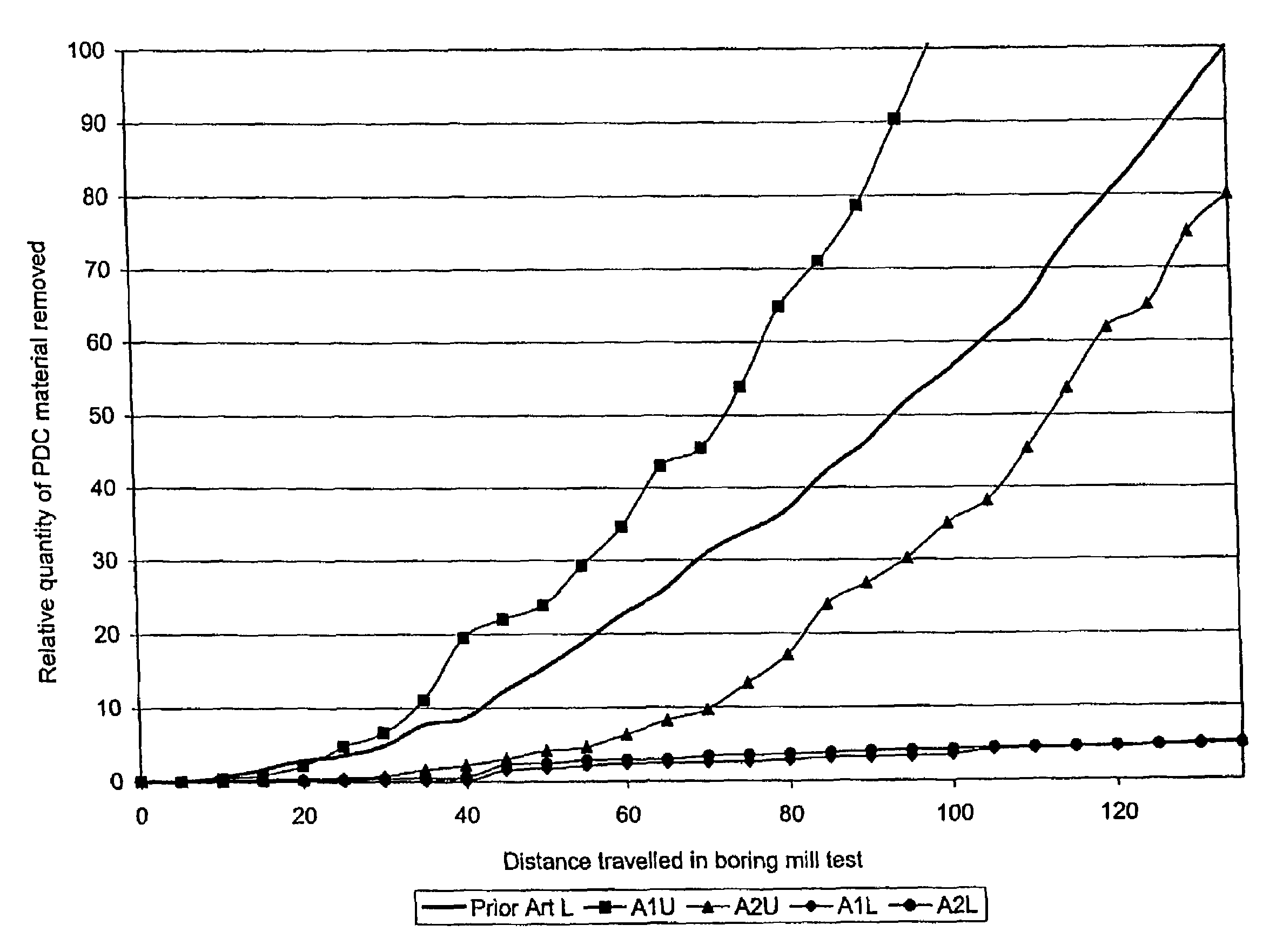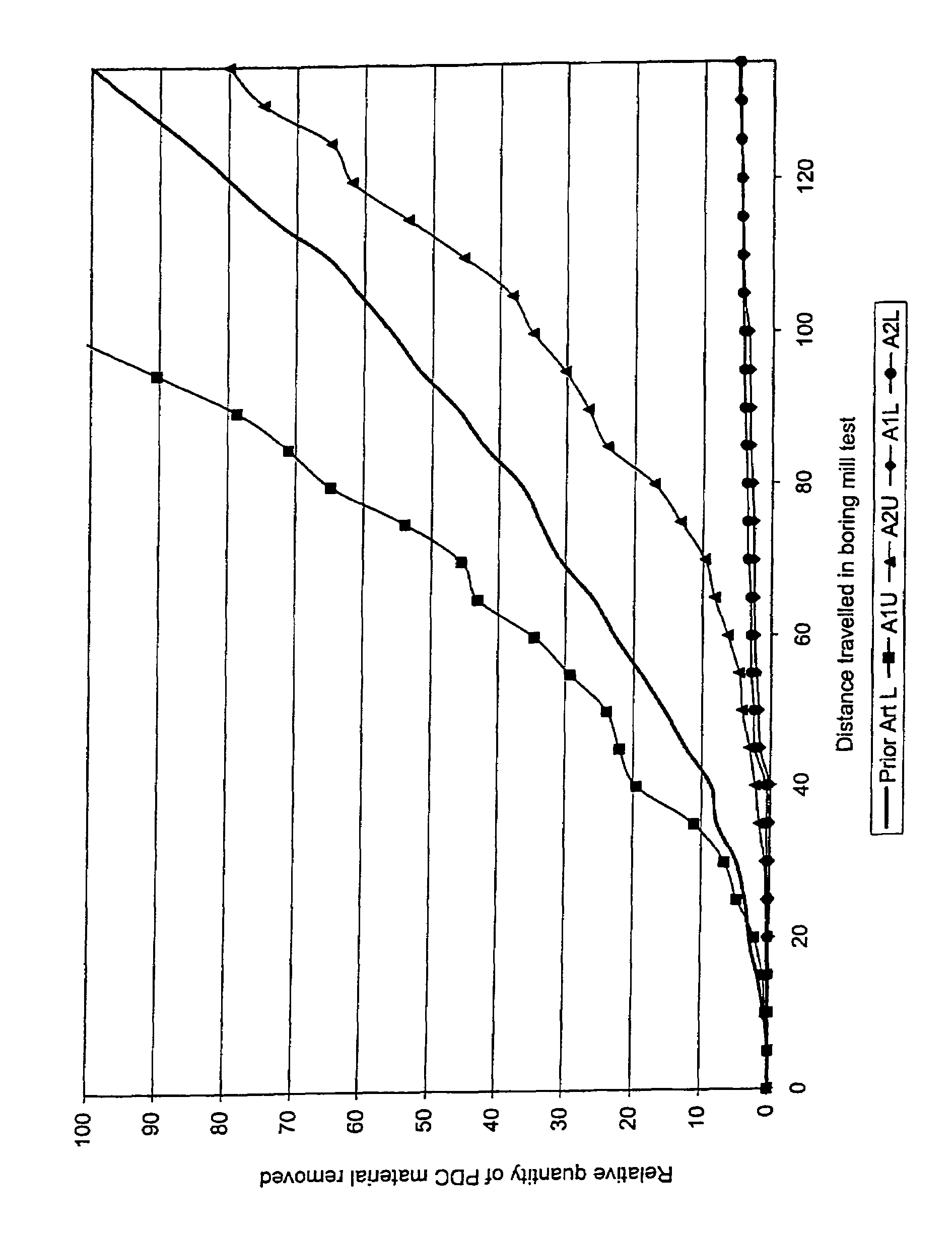Polycrystalline diamond abrasive elements
a diamond abrasive element and polycrystalline technology, applied in the field of tool inserts, can solve the problems of cutting tool inserts subjected to heavy loads and high temperatures, cutting tools subjected to large contact pressure, and their li
- Summary
- Abstract
- Description
- Claims
- Application Information
AI Technical Summary
Benefits of technology
Problems solved by technology
Method used
Image
Examples
Embodiment Construction
[0037]The polycrystalline diamond abrasive elements of the invention have particular application as cutter elements for drill bits. In this application, they have been found to have excellent wear resistance and impact strength without being susceptible to spalling or chipping. These properties allow them to be used effectively in drilling or boring of subterranean formations having high compressive strength.
[0038]A polycrystalline diamond layer is bonded to a substrate. The polycrystalline diamond layer has an upper working surface around which is a peripheral cutting edge. The polycrystalline diamond layer has a region rich in catalysing material and a region lean in catalysing material. The region lean in catalysing material extends from the working surface into the polycrystalline diamond layer. The depth of this region will typically be no more than about 500 microns, and is preferably from about 30 to about 400 microns, most preferably from about 60 to about 350 microns. Typic...
PUM
| Property | Measurement | Unit |
|---|---|---|
| particle grain size | aaaaa | aaaaa |
| particle grain size | aaaaa | aaaaa |
| particle grain size | aaaaa | aaaaa |
Abstract
Description
Claims
Application Information
 Login to View More
Login to View More - R&D
- Intellectual Property
- Life Sciences
- Materials
- Tech Scout
- Unparalleled Data Quality
- Higher Quality Content
- 60% Fewer Hallucinations
Browse by: Latest US Patents, China's latest patents, Technical Efficacy Thesaurus, Application Domain, Technology Topic, Popular Technical Reports.
© 2025 PatSnap. All rights reserved.Legal|Privacy policy|Modern Slavery Act Transparency Statement|Sitemap|About US| Contact US: help@patsnap.com


